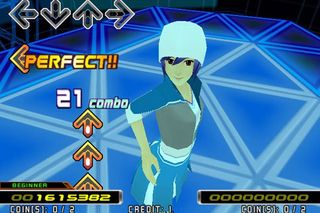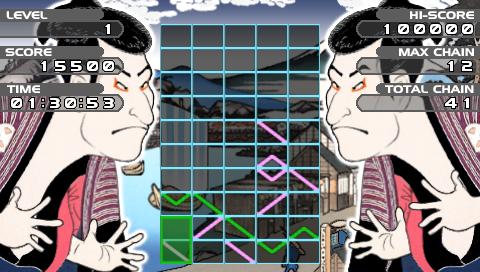Why you can trust GamesRadar+
What keeps Gunpey from being a true new puzzle classic is that the core experience doesn't lend itself to much variety. There are "original" and "break" rule sets that determine whether tiles above a destroyed line fall or not, but that's the only substantive variation on tap. Gunpey DS covers this fact with frontier mode's nutty unlockable characters, and their unique attacks make multiplayer matches more interesting than they are on the PSP edition. Depending on how long your lines are, you can force your rival to play without the touchscreen, mix up his tiles, and more.

The remaining offerings are pretty stock, from time attack and endless challenge modes, to speed-adjustable stage attacks. There's at least a double-screen option that lets you play two fields at once, switching back and forth between them, testing your multitasking ability.
The addition of a pointless animated character called "G-Note," who slowly unlocks his library of uniformly unimpressive animations, and a Sound Box sequencer that lets you noodle around with simple electronic music, seem half-hearted at best.
More info
| Genre | Family |
| Description | You're frantically swapping etched tiles to create colorful lines with a stable of silly characters. |
| Platform | "DS","PSP" |
| US censor rating | "Everyone 10+","Everyone 10+" |
| UK censor rating | "","" |
| Release date | 1 January 1970 (US), 1 January 1970 (UK) |

As some analysts "hope" GTA 6 will normalize $100 games, one Baldur's Gate 3 dev points out that "prices haven't risen with inflation"
Leading analysts predict the Nintendo Switch 2 could shift anywhere between 14 million and 20 million units in its first year - if Nintendo can keep up with demand

30 years later, Fallout creator Tim Cain is searching for a legendary D&D player who cheesed an entire competitive dungeon with a lightning-fast Monk build
Most Popular

